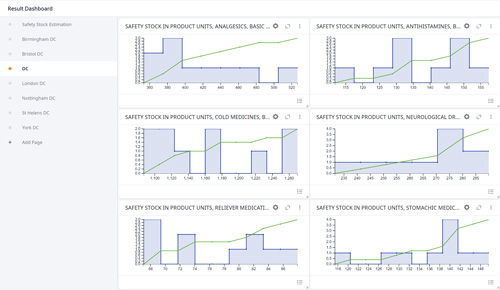How simulation-based approaches help to manage inventory efficiently and in a customer-focused manner
Well-thought-out inventory planning is a key component of efficient supply chain processes. Studies show that companies can lose up to 20% of their potential revenue due to inefficient warehousing. Choosing the right inventory strategy not only affects storage costs, but also service levels, capital commitment and delivery capabilities to customers.
The goal of inventory planning
The goal of inventory planning is to have the right amount of material in the right place at the right time – neither too much nor too little. This involves precisely matching inventory levels to actual demand in order to avoid both understocking and overstocking.
Overview of common inventory strategies
Companies have a variety of inventory strategies at their disposal, including:
- Min-max policy: Responds to minimum stock levels by reordering up to a specified maximum stock level.
- RQ policy: A fixed order quantity is triggered as soon as the stock level falls below a certain threshold.
- Order-on-demand: Material is only reordered when there is a specific need.
- Material requirements planning (MRP): Plans requirements based on production specifications and parts lists.
- Regular ordering: Procurement takes place at fixed intervals, taking safety stocks into account if necessary.
Each of these strategies has specific advantages and disadvantages and is suitable depending on the product type, demand situation and production environment.
Simulation as a decision-making tool
Simulation-based analysis is an essential tool for selecting the right inventory strategy. Software solutions such as anyLogistix can be used to map and evaluate different scenarios, such as fluctuations in demand, delivery bottlenecks or seasonal effects.
Simulation not only enables standardised strategies to be compared, but also allows individual policies to be defined and analysed that are precisely tailored to the requirements of the respective company. This allows warehouse stocks, safety reserves and service levels to be optimised in a targeted manner.
Greater transparency in the supply chain
The combination of systematic inventory planning and simulation-based decision-making reduces costs and improves delivery performance. The strategic choice of inventory strategy thus forms the basis for a resilient and customer-oriented supply chain.


